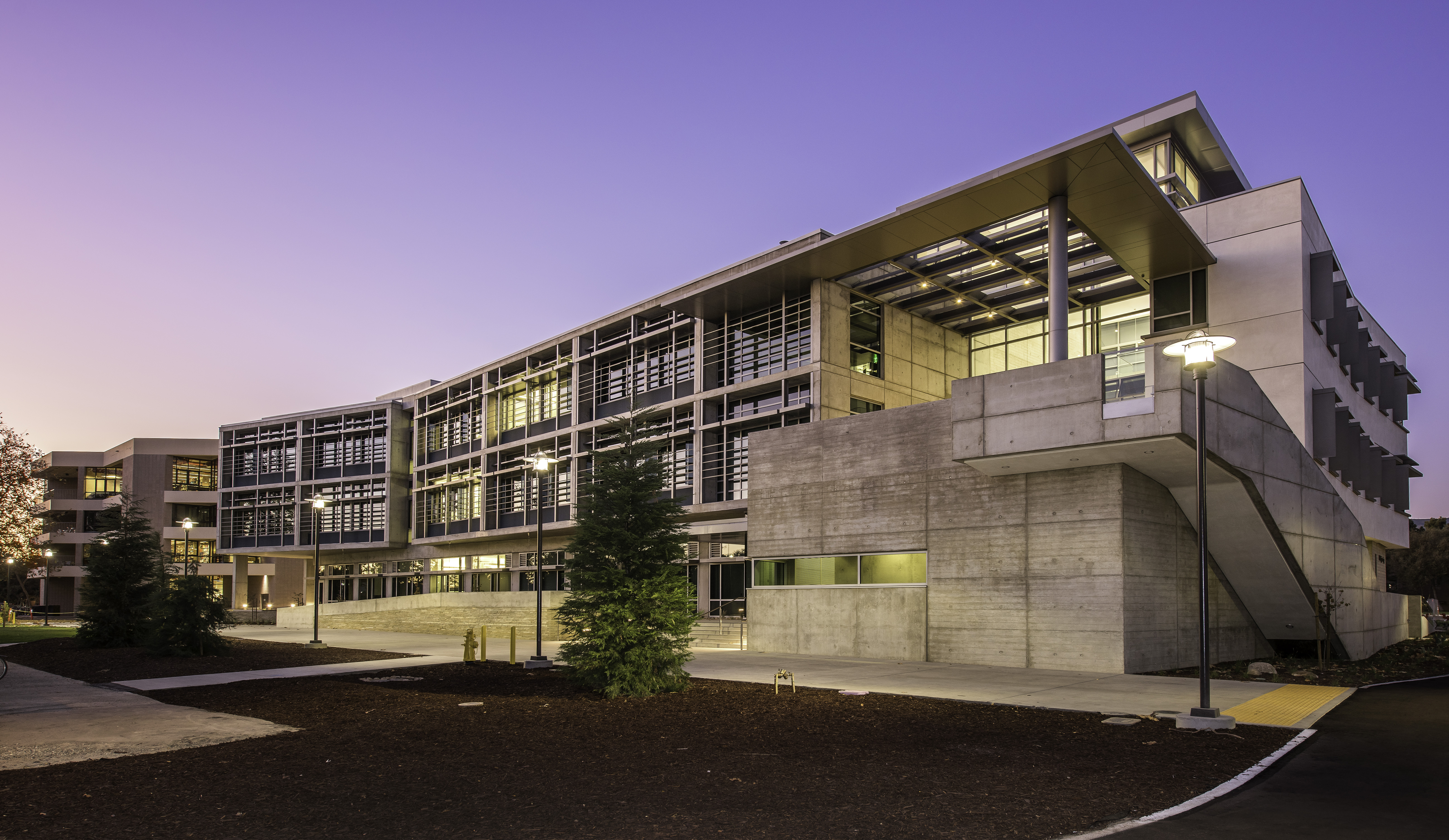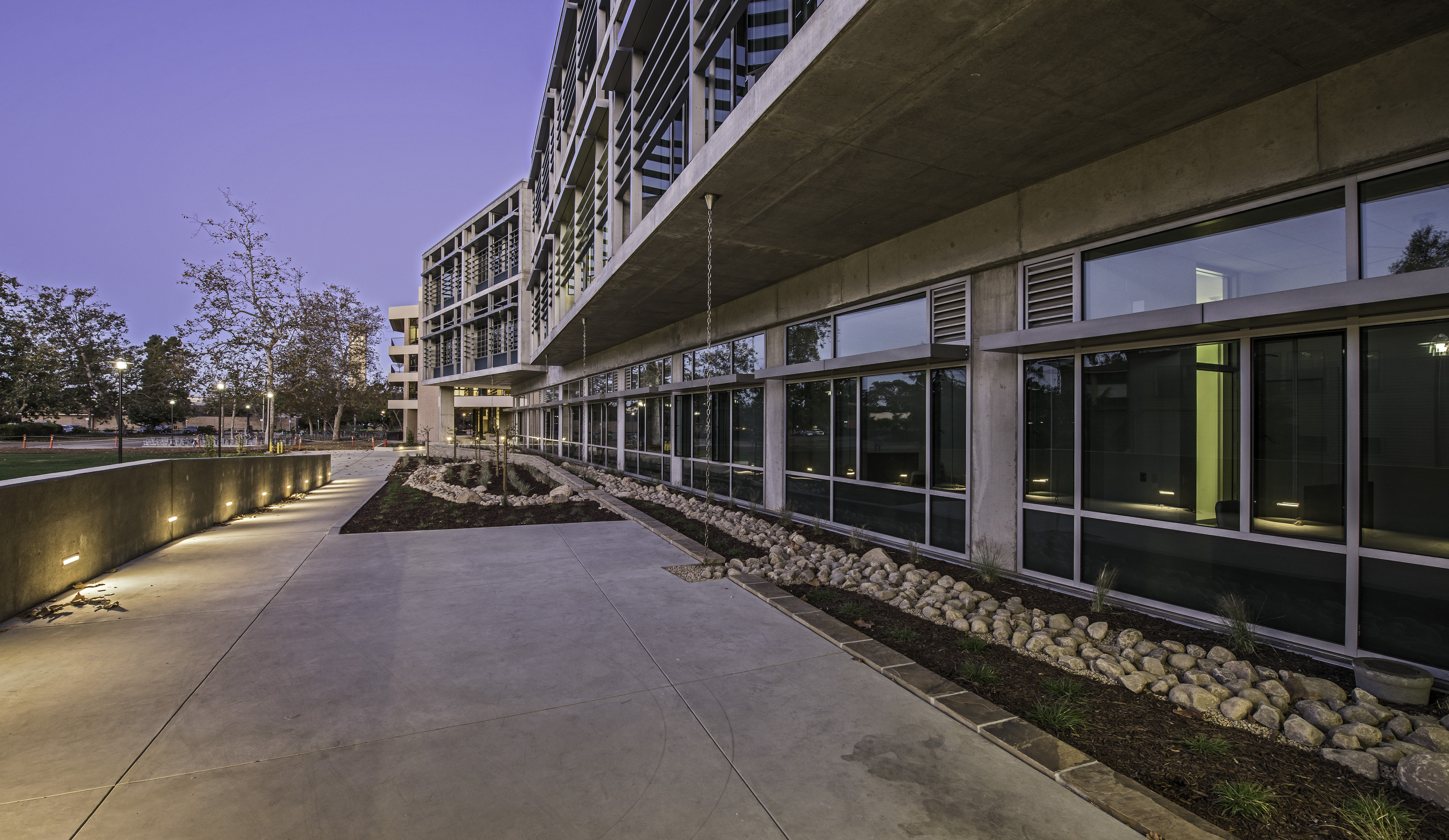Housing the Center for Bioengineering (CBE) and the Institute for Collaborative Biotechnologies (IBC), the new facility comes as new bioengineering research is transforming everything from disease detection and diagnosis to how drugs are delivered to specific sites within the body. Already a leader in bioengineering teaching and research, UCSB now has a facility to further expand its work in this field and offer closer collaboration with industry partners.
Evolving through an interactive programming and design process with a diverse group of researchers and a shared goal to create an interdisciplinary research center, the effort resulted in a collaboratively functional and eco-friendly glass, metal and concrete building encompassing 75,000sf. The cast-in-place concrete facility, with three levels above grade and one below, provides innovative research neighborhoods, pairing computational work areas and adjoining research offices with wet laboratories supported by extensive procedure and specialty equipment space.
Centered within UCSB’s science district, the LEED Platinum-certified building is anchored by a three-story atrium. The atrium vertically links informal interaction areas and a south-facing terrace, expanding the College of Engineering’s outreach ability and fostering an active center for collaborative research.
The culmination of a decade of planning, complex fundraising efforts and nearly three years of construction, this vital research center exemplifies the benefits of collaboration both in its creation and function. As Brad Chmelka, Co-Director of UCSB's Institute for Collaborative Biotechnologies so aptly said, “The future is brighter for a broad range of shared research because of this investment.”



